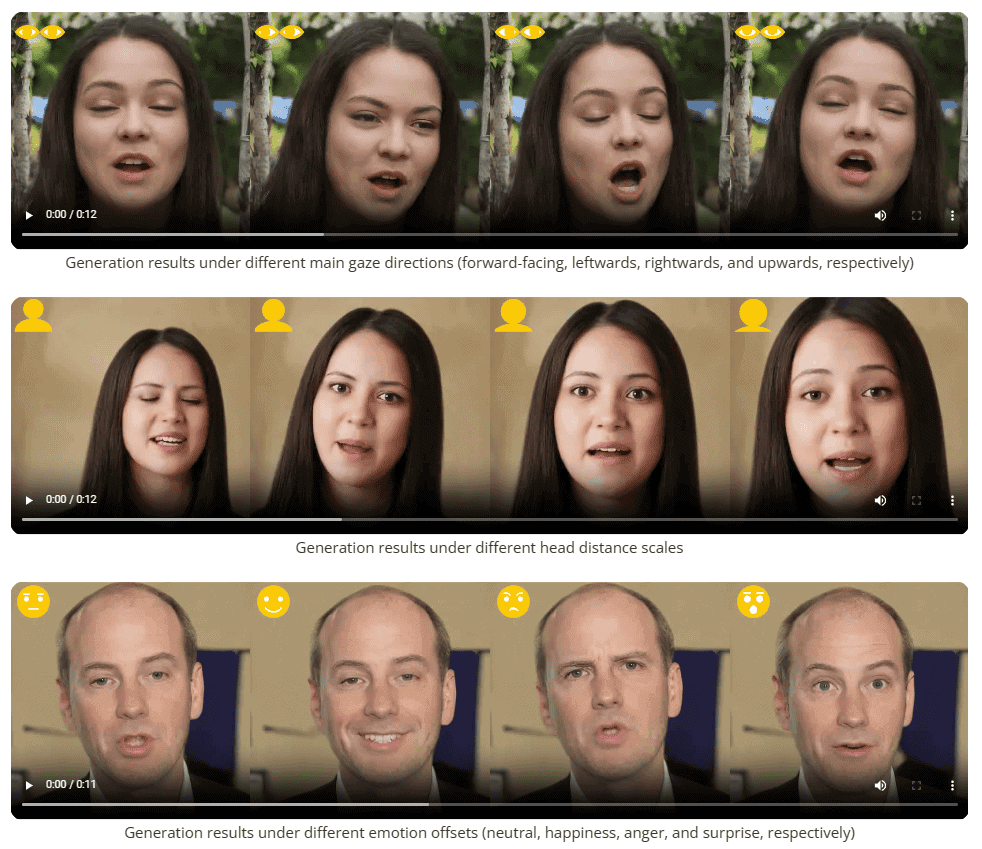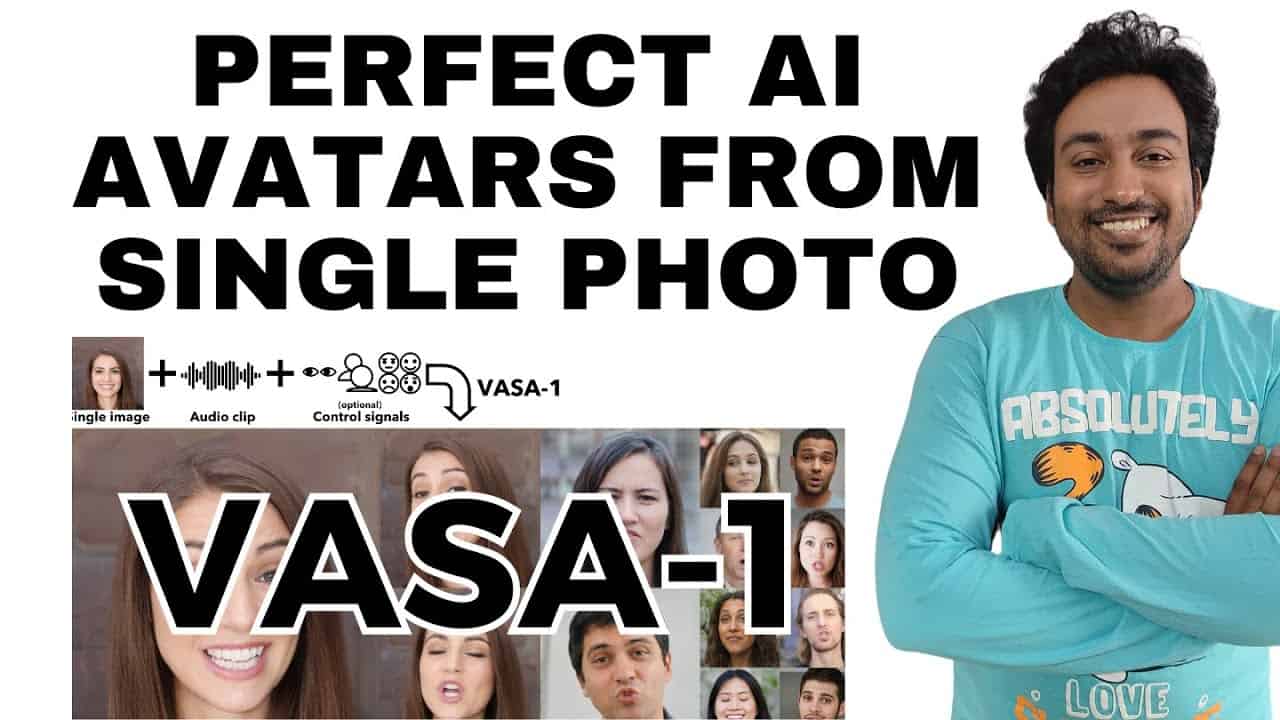Let me share my experience exploring VASA-1, Microsoft’s exciting new AI project that lets you make anyone say anything with just a photo and audio clip.
What is VASA-1 and How Does it Work?
VASA-1 is an AI system from Microsoft Research that generates hyper-realistic talking face videos in real-time from a single portrait photo and speech audio.
- Precise lip-audio sync
- Lifelike facial expressions and behavior
- Naturalistic head and shoulder movements
The technology behind it is quite complex, but in simple terms:
- It uses diffusion-based models and a specialized face-latent space.
- The model can independently control different facial features, not just the mouth and eyes, to create naturalistic videos.
- It currently focuses on headshot pictures.
While it sounds like sci-fi, seeing the demos blew me away. However, VASA-1 is not yet publicly available, only examples from Microsoft are out so far.
Incredible Examples of VASA-1 Avatar Videos
Even with glasses, the eyes and brows move realistically, similar to advanced video marketing techniques.

Microsoft provided many impressive examples showing the capabilities of VASA-1:
Realism and Liveliness
The generated avatars move and emote in very natural, human-like ways. The expressions are vivid, with eye movement, eyebrow raises, and head tilts. Even with glasses, the eyes and brows move realistically.
Diverse Audio Inputs
VASA-1 handles diverse voices and audio clips well. I liked that it matches the pacing and emotion of the voice, rather than being robotic. It even works for singing!
Different Gaze Directions
The AI can make the avatars look in different directions – forward, left, right, up, down – while still appearing natural, not obviously computer-generated.
Various Camera Distances
Whether zoomed in close on the face or pulled back to show the shoulders, the avatars remain realistic. I was impressed that even the shoulders move naturally, not just the face.
Emotional Expressions
VASA-1 can generate different emotional expressions – neutral, happy, angry, surprised – that mostly look natural, though a couple seemed more artificial to me.
Artistic and Cartoon Avatars
Amazingly, VASA-1 works on more than realistic photos. It can animate artistic images, like the Mona Lisa, or even cartoons and animal characters. We’ve had impressive AI-generated art for a while, but animating it takes things to the next level.
Potential Real-World Applications
The use cases for this AI technology are endless and could transform many industries:
- Virtual avatars for real-time chatbots
- Talking heads for educational videos in any language
- More realistic animated characters for movies/TV
- Virtual hosts and representatives
- Synthetic media for entertainment
Ethical and Legal Considerations
Protecting privacy and consent of people’s images, which is crucial in digital marketing.
As exciting as VASA-1 is, there are important issues to consider:
- Preventing misuse and misinformation (deep fakes)
- Protecting privacy and consent of people’s images
- Intellectual property rights and ownership
- Avoiding emotional manipulation
- Ensuring transparency that content is AI-generated
- Prioritizing ethical AI development
Microsoft and society will need robust guidelines and regulations as this technology advances to both harness the benefits and mitigate the risks.
Final Thoughts on the Future of AI Avatars
VASA-1 is a thrilling glimpse into the future of AI-generated talking avatars. The realism is remarkable, with nuanced emotional expressions, natural movements, and sync with diverse voices.
The potential applications across education, entertainment, business and more are vast. However, the risks of misuse, privacy violations, and deception are also very real. Responsible development with strong ethical safeguards will be critical.
I’m excited to see where this technology leads, though we must be thoughtful about how we use it.
What do you think about the future of AI avatars? Let me know in the comments! And if you’re interested in more AI developments, check out my article on Meta AI’s Llama 3.
Let me know in the comments!

